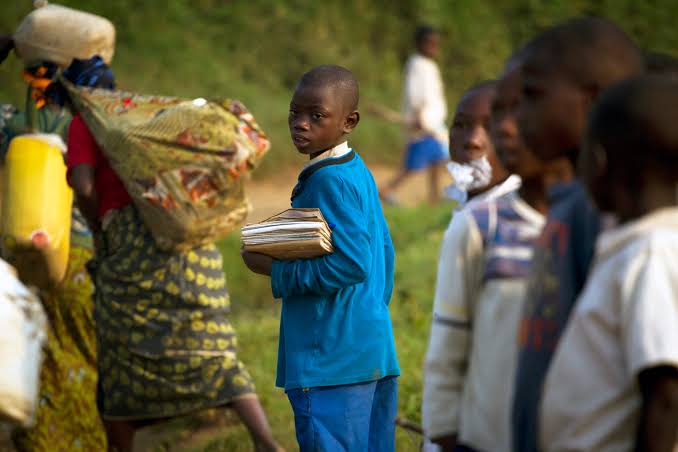A young Congolese boy walks to school near the Kahe refugee camp in Kitschoro, northeastern DRC. Photo/Courtesy
Thousands of children in eastern Congo have been forced out of school as relentless fighting between the Congolese army and the M23 rebel group intensifies. The violence, which has displaced hundreds of thousands, has also crippled the region’s education system, leaving countless students without access to learning. Schools in North Kivu province, particularly around Goma, have either been shut down, occupied by armed groups, or converted into shelters for displaced families.
According to humanitarian organizations, more than 500 schools have closed due to the conflict, affecting at least 270,000 children. The ongoing violence has not only disrupted education but also placed students and teachers at risk. Reports indicate that armed groups have attacked several schools, with some teachers and students being kidnapped. The deteriorating security situation has made it nearly impossible for schools to operate, especially in areas under rebel control.
In displacement camps around Goma, nearly 240,000 children are struggling to find any form of structured education. Some have access to temporary learning centers set up by UNICEF and other aid organizations, but the vast majority remain out of school. For students preparing for crucial national exams, the situation is especially dire, as there are few safe venues for them to take their tests and obtain formal qualifications.
The crisis has worsened due to the occupation of school buildings by armed groups. At least 119 schools have been attacked or repurposed for military use, while nearly 1,700 schools have shut down due to persistent insecurity. Additionally, more than 300 schools have been turned into shelters for displaced families, making them unavailable for educational purposes. Teachers have also been deeply affected, with many fleeing the violence and others unable to return to work due to ongoing threats.
The long-term consequences of this disruption are devastating. Beyond the immediate loss of education, children in conflict zones face an increased risk of recruitment by armed groups, child labor, and early marriage. Many are also struggling with severe trauma after witnessing violence or being forced to flee their homes. Aid organizations, including UNICEF and Save the Children, are working to provide emergency learning spaces, school supplies, and psychosocial support, but resources remain limited.
The United Nations and human rights organizations have raised concerns over the growing humanitarian crisis in eastern Congo. The situation in Goma is particularly alarming as M23 rebels continue advancing toward the city, raising fears of further displacement and instability. With Goma serving as a key hub for humanitarian aid, continued fighting in the region could worsen the already dire conditions for millions of displaced people.
For now, the future of thousands of Congolese children remains uncertain. Without urgent action to restore security and reopen schools, an entire generation risks losing access to education, further deepening the cycle of poverty and violence in the region.


Facebook Comments